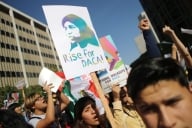You have /5 articles left.
Sign up for a free account or log in.

edi productions/Getty Images
Stories of layoffs were plentiful during the early days of COVID-19, as colleges and universities prepared for the worst impacts of the global pandemic on enrollment and finances. New data released Monday by the U.S. Education Department offer a quantitative (if retrospective) look at the collective toll of those cuts, which disproportionately affect less affluent workers and institutions.
Over all, the number of people employed by colleges and universities eligible to award federal financial aid fell to 3.87 million in fall 2020, down 3.9 percent from 4.02 million in fall 2019.
The cuts did not land proportionately, by job title or institution type. As seen in the table below, community colleges shed more than 11 percent of their employees, followed by for-profit institutions, four-year private colleges and four-year public institutions. (Medical school staffs at four-year public universities grew by 2 percent during the pandemic.)

The job losses affected different groups of employees very differently as well. The decline in the number of part-time employees (7.5 percent from 2019–20 to 2020–21) was about four times greater than the drop in the number of full-time positions (1.8 percent).
And on balance, the higher education employees most likely to have lost their jobs during the pandemic were the most vulnerable among them to begin with. As seen in the table below, service and transportation positions and administrative support workers were the job categories that shrank the most between 2019 and 2020, with part-time workers disproportionately affected.
Instructors were less likely than student and academic affairs administrators and librarians to lose their jobs, but more likely than senior managers and business and technology administrators.
On the faculty side, part-time instructors’ jobs (which declined by 7.5 percent) were far likelier to be eliminated than were full-time faculty positions (which dipped by 1.3 percent).

Community college faculty members were hit quite a bit harder than their peers at other institutions, though.
The proportional job losses at two-year public institutions were twice as large for administrative support workers and academic and student support administrators, and nearly three times as large for instructors (11.1 percent of all faculty jobs at community colleges versus 4.3 percent over all) and librarians (13 percent versus 5.4 percent).
Nearly one in 10 community college technology workers lost their jobs, compared to just 1 percent of tech and engineering workers across higher education broadly.





